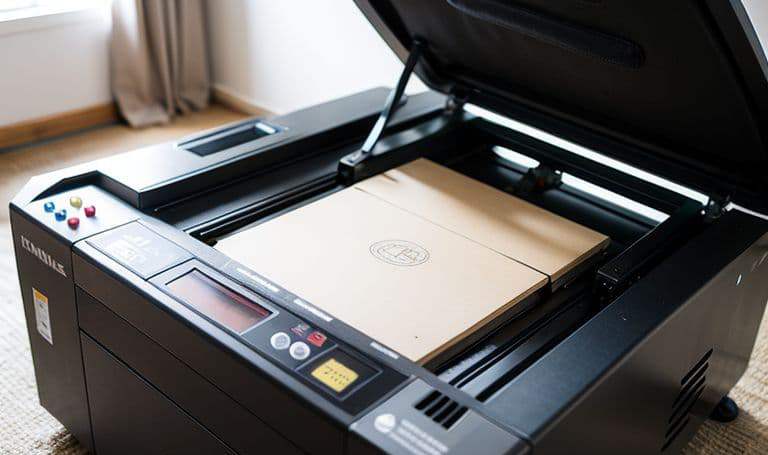how a laser engraving machine works
How a Laser Engraving Machine Works
Engraving refers to a type of printing done on metal plates. Lines are cut on the metal where the ink will be held. A laser engraver machine uses laser technology to engrave on a metal surface or any other surface. They are widespread in industries that want to label or mark manufactured items and are known for their precision and smooth finishes. This article will look at everything businesses should know about laser engraving machines.
Demand and Market Share for Laser Engraving Machines
In 2020, the global market share of laser engraving machines was US$ 2.76 billion. The adoption of laser engraving machines is driven partly because of the benefits they offer in the automation of industries. The most notable of these is the medical field, which has recently experienced an upward surge in laser engraving technologies. Their reliability, effectiveness, and uniqueness of production are reasons that will drive their adoption even further.
Factors to Consider When Buying a Laser Engraving Machine
Throughput of the Engraving Machine
Throughput refers to parts processed per hour. The speed with which the engraving machine works will directly affect business sales, whether the volume of work is low or high. This, in turn, gives the business an edge in that it can offer lower prices to its customers.
Table Size of Processing
The table size determines the size of the object engraved. A smaller table size translates to smaller objects engraved, while a more extensive table will allow bigger objects to be engraved. The table sizes range from 300mm x 200mm while larger tables can be as big as 1600mm x 900mm. Depending on the object size businesses want to engrave, they can choose a suitable engraving machine.
Applicable Material of the Engraving Machine
Engraving machines can work with several materials. Plastic, paper, metal, acrylic, and wood can be used during engraving. Businesses should consider the material they will be engraving before purchasing because engravers specialize in different materials.
Brand of Key Components
Before businesses purchase an engraving machine, they should consider well-established and reputable brands. This is to find quality and market-approved engraving machines. Besides this, a clear on-site demonstration of the engraver should be made to businesses to ascertain its effectiveness.
Types of Laser Engraving Machines
CO2 Laser Engraving Machines
CO2 laser engravers are the most common type and are typically used for non-metal materials such as wood, acrylic, glass, and leather. They are known for their versatility and precision.
Fiber Laser Engraving Machines
Fiber laser engravers are ideal for metal materials, including stainless steel, aluminum, and brass. They offer high precision and are suitable for industrial applications where durability and speed are crucial.
UV Laser Engraving Machines
UV laser engravers are used for materials that require high precision and minimal thermal impact, such as plastics, glass, and ceramics. They are often used in the electronics and medical industries.
The Target Market for Laser Engraving Machines
Laser engraving machines are utilized across various industries due to their versatility and precision. The primary markets include:
Medical Industry
Laser engravers are used to mark medical devices and instruments with serial numbers, barcodes, and other identifiers. This ensures traceability and compliance with regulatory standards.
Automotive Industry
In the automotive sector, laser engraving machines are used to mark parts and components with serial numbers, logos, and other information. This helps in quality control and traceability.
Jewelry and Fine Arts
Laser engravers are popular in the jewelry industry for creating intricate designs and personalized engravings on various materials, including metals and gemstones.
Electronics and Semiconductors
Laser engraving machines are used to mark electronic components and semiconductor devices with identifiers, logos, and other information. This ensures traceability and quality control.
How a Laser Engraving Machine Works
Laser Technology Basics
All lasers consist of three principal components:
- An energy source, usually known as an external pump source.
- An active laser medium.
- Two or more mirrors that form the resonator.
Engraving Process
A laser engraving machine emits a high-power density laser beam through the optical path system. The laser beam irradiates the surface of the workpiece until it reaches the melting point or boiling point. At the same time, the high-pressure gas runs coaxially with the beam to blow away the molten or vaporized metal. As the relative positions of the beam and the workpiece move, cutting marks will appear on the material, thereby starting the engraving process.
Laser Marking Techniques
Laser marking is the marking or labeling of workpieces and materials with a laser beam. There are different ways this can happen, such as engraving, removing, staining, annealing, and foaming. Depending on the type of material and the quality you want, each of these procedures has its advantages and disadvantages.
Advantages of Laser Engraving Machines
High-Precision Marking
Thanks to the high precision of laser marking, even very delicate graphics, 1-point fonts, and really small geometries will be clearly legible. At the same time, marking with a laser marker ensures continuous high-quality results.
High Marking Speed
Laser marking is one of the fastest marking processes available in the market. This results in high productivity and cost benefits for your business.
Versatility
Laser engraving machines can work with a wide range of materials, including metals, plastics, wood, leather, and glass. This makes them suitable for various applications across different industries.
Conclusion
Laser engraving machines are an essential tool in many industries due to their precision, speed, and versatility. Whether you are in the medical, automotive, jewelry, or electronics industry, a laser engraver machine can provide high-quality, durable markings on a variety of materials. By understanding the different types of laser engraving machines and the factors to consider when purchasing one, businesses can make informed decisions to meet their specific needs.